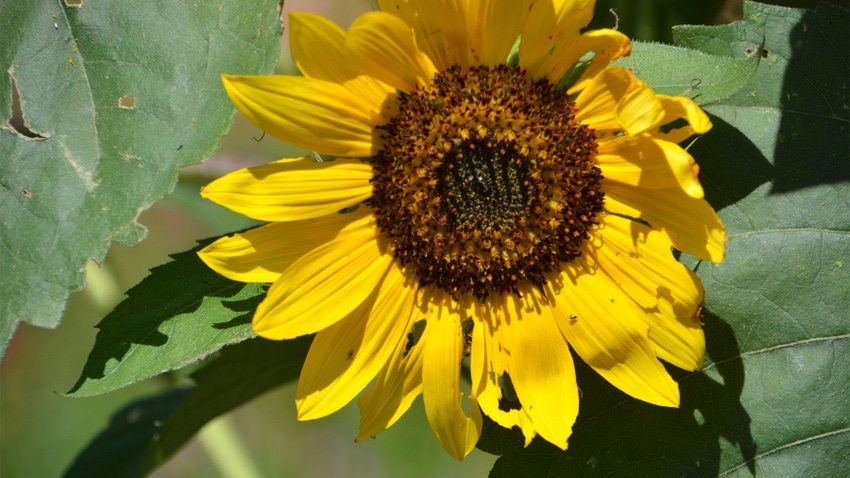
Susan Hayhurst relied on a tried-and-and true phrase in her latest column — “bloom where you’re planted.” She noted that while it may take time, if you’re a city girl “planted” on a farm in married life, then you need to “bloom” there. Trust me, she bloomed and then some, becoming an active supporter of agriculture, plus a dedicated farm wife and mother.
I’ve got a new phrase for you — “bloom where you’re not planted.” Two of my most enjoyable, successful ventures in gardening and landscaping this year were complete surprises. Neither one was planned, but both came along at just the right time to add beauty to my summer.
No, it wasn’t volunteer tomatoes, though I have plenty of those. And it wasn’t a volunteer pumpkin growing in a compost pile. That happened a few years ago. The grandkids’ pumpkins on the front porch came straight from that compost pile … OK, it was really a manure pile. The grandkids thought they were cool jack-o’-lanterns all the same.
Sunflower surprise No. 1
I was tending one of my baker’s dozen of raised garden beds near the end of June, weeding out my overcrowded tomatoes. I started to pull a weed when a light bulb flashed.
“Wait a minute, that’s not a weed,” I thought. “It’s a sunflower. Where did it come from?”
Ah, yes. I grew a short row of sunflowers just for fun in the real garden near the beds a year ago. Apparently, birds or some critter transported at least one sunflower seed to the garden bed. It was just one, but it was one — growing where it was not planted.
I decided the tomatoes needed company. So, I left it. Before long, the sunflower was blooming where it was not planted. About 5 feet tall on a sturdy stalk, it produced a large head rimmed with bright yellow petals and a green underside. Once I began picking tomatoes regularly, it made me smile every time I looked up at that bright, colorful, solitary sunflower.
Sunflower surprise No. 2
Along the south end of our garage, I’ve maintained flowers for years. This year, tired of tilling the rocky soil, I got smart. My grandson and I filled large flowerpots with soil and placed a row of them, filled with various annuals and perennials, along the end of the garage. They brought color during most of the summer, and I didn’t have to get on my hands and knees to pull the weeds that always grow in the marigolds and petunias.
One day around Aug. 1, when the flowers were starting to look a little ragged, I noticed a plant growing in front of one pot, still in the mulch but near the edge of the yard. Yes, it was another sunflower growing where it was not planted. I have no idea where this one came from. It’s far removed from the garden.
Right on cue, a couple of weeks later, it bloomed where it was not planted, bringing me another few weeks of smiles every time I walked by.
After all, if you let things bloom where they are planted, then you certainly let them bloom where they were not planted! My summer was much brighter because of it.
About the Author(s)
You May Also Like




